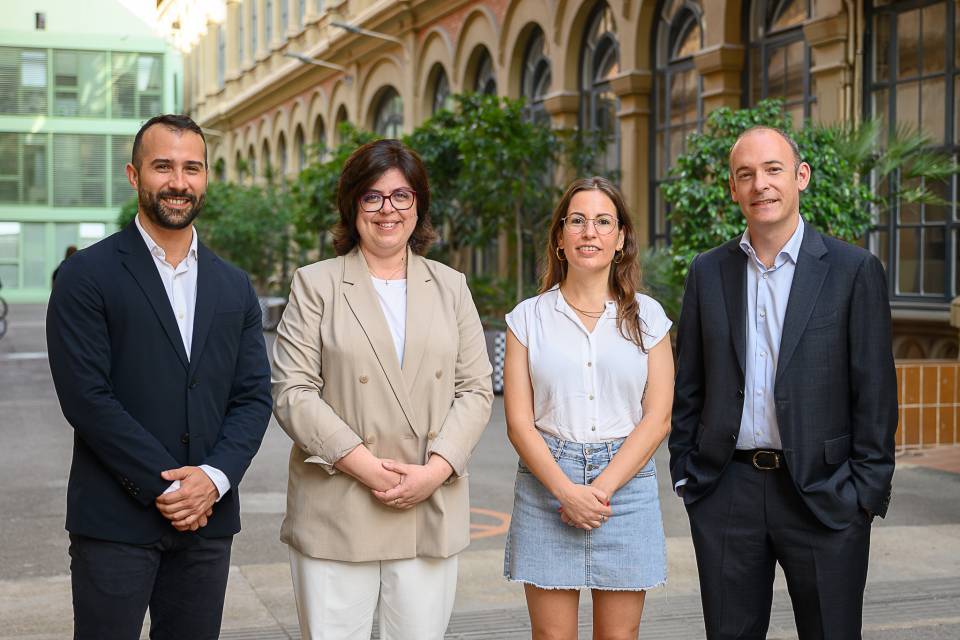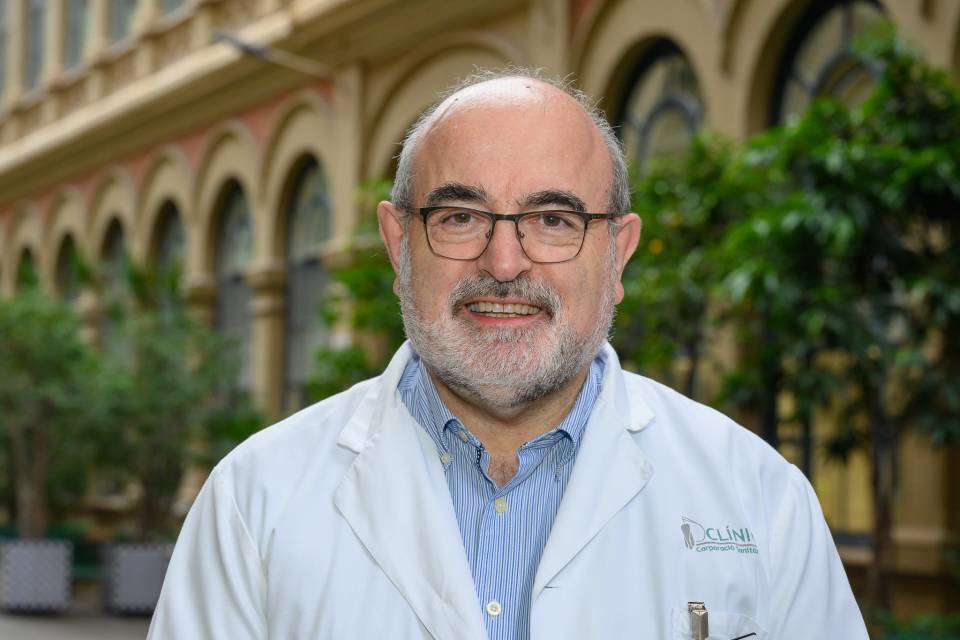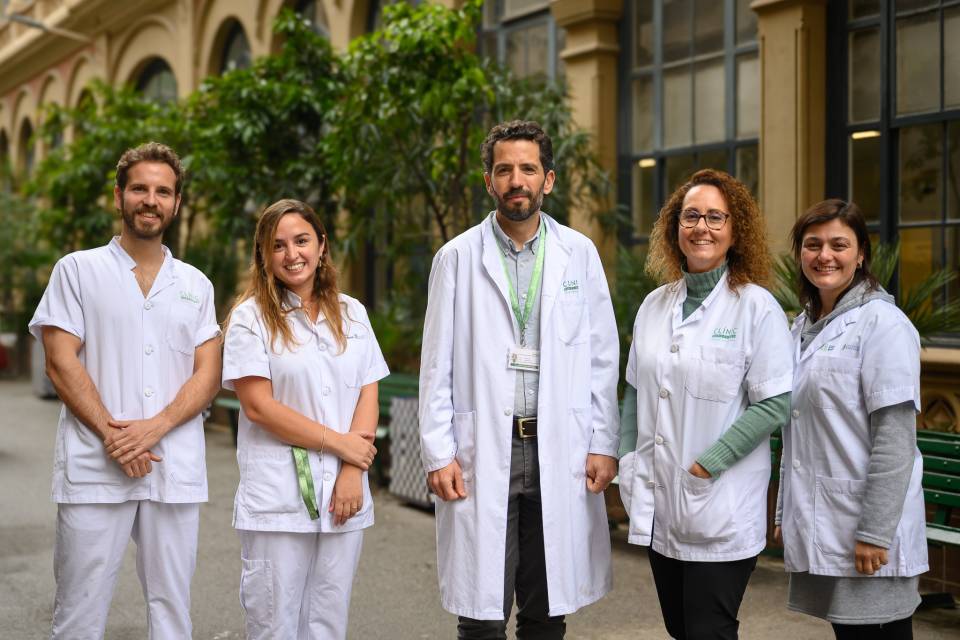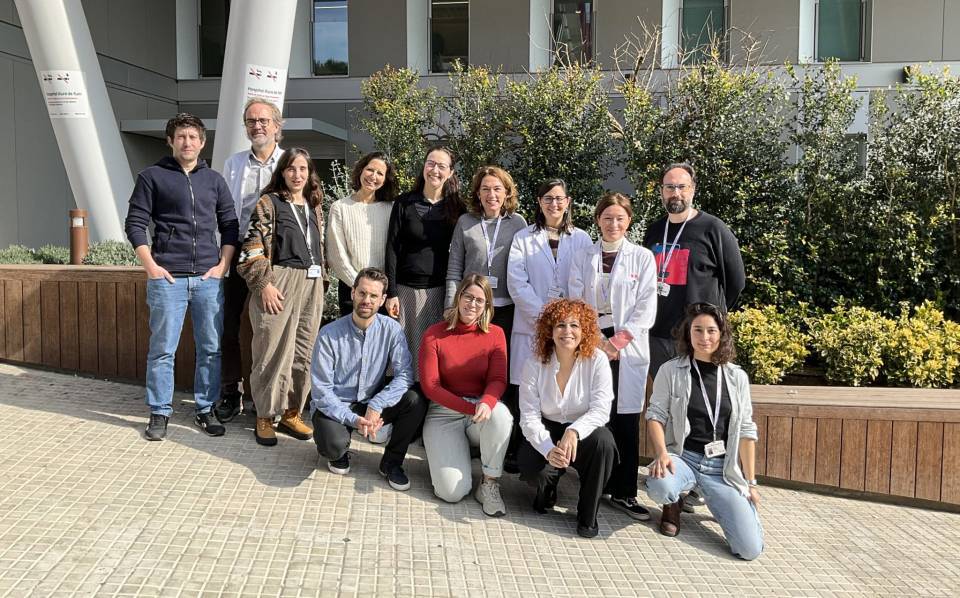The principal investigators of the SOLTI-1805 TOT-HER3 study were Dr. Aleix Prat, director of the Institute of Cancer and Blood Diseases at the Clínic and head of the IDIBAPS Translational Genomics and Targeted Therapies in Solid Tumours group; and Dr. Mafalda Oliveira, medical oncologist at the Hospital Vall d’Hebron, VHIO researcher and president of SOLTI.
Antibody-drug conjugates, such as patritumab deruxtecan, are revolutionizing cancer treatment. However, the activity of these drugs is variable and cannot be explained solely by the target receptors. Therefore, there is currently a great medical need to study the biology of these tumours further and to find biomarkers that help identify the patients who will benefit the most.
The study made it possible to characterize the tumours of 97 patients at a molecular level and discover the biological characteristics at two points in time: before starting treatment and after finishing. This study format, known as a window-of-opportunity trial, allows for the identification of biomarkers, which will then be use to predict who can benefit more or less from a drug. In order to carry out the trial, highly complex techniques were used in three key points in the cells: in the DNA, the RNA and the proteins, to check their validity.
The study described the biological activity associated with an antibody-drug conjugate, patritumab deruxtecan (targeting the HER3 receptor), in patients with localized hormone receptor-positive breast cancer (HR+/HER2-), as well as in patients with triple-negative tumours who have not received treatment. TOT-HER3 showed that, in tumours with a low expression of the ERBB2 gene, which contains the information on receptor HER2, increased drug activity is observed. Thus, ERBB2 levels are a good indicator of response to this antibody-drug conjugate, and it was also seen that chemosensitivity biomarkers were also associated with the response to this drug.
Dr. Aleix Prat points out that, “Patritumab deruxtecan showed that counting HER3 receptor levels in biopsy tumour cells was not sufficient as a thermometer of drug activity. We needed to go further and analyse other biological parameters, including multi-parameter gene expression signatures, to determine which patients benefited most from this treatment. Against all expectations, thanks to the TOT-HER3 study, we identified that there is an inverse relationship between the expression of the HER2 receptors and the benefit of this anti-HER3 drug for patients. The hypothesis that has been put forward to explain this drug activity is the drug’s different capacity for internalization in the presence or absence of HER2. To answer this question, SOLTI is now running the VALENTINE trial”.
Meanwhile, with regard to the methodology used in the study, Dr. Fara Brasó-Maristany, co-author of the study and researcher in the laboratory headed by Dr. Aleix Prat, underlines that: “We used the marker known as CelTIL to determine whether or not there was any drug activity in this group of patients. This is a variable that we analyse in the laboratory using tumour samples. It allows us to deduce the level of clinical benefit for patients. In this case, we measured how this marker changed at the start and the end of treatment, in order to see whether patritumab deruxtecan played a role in modifying these tumours. We saw that what those patients who benefited the most had in common was that they had a low expression of the ERBB2 gene. This helped us to conclude that measuring the ERBB2 gene along with other genes related to chemosensitivity would be a good biomarker for predicting the drug activity in each patient: more specifically, the lower the expression of the gene, the more effective the treatment”.
Finally, Dr. Mafalda Oliveira, co-principal investigator of the study, president of SOLTI and medical oncologist at the Hospital Vall d’Hebron and VHIO, concludes: “The TOT-HER3 study is a paradigmatic example of how a drug that has already been tested in metastatic disease can be efficiently tested in the early-stage context and how SOLTI has been able to coordinate this to provide this new therapeutic option to patients who have never been treated. Window-of-opportunity trials like this one are fundamental for providing proper information on the development of a drug, since the information obtained can be of key importance. The TOT-HER3 concept may be applicable to many other drugs, particularly in breast cancer, where there is a wealth of drugs for all the patient subgroups currently in trials for metastatic disease. The next step is to see whether we can also evaluate them in the context of early-stage disease, which is where we can cure more and better”.
A milestone in the history of antibody-drug conjugates
Experts agree that antibody-drug conjugates (ADCs), commonly known as Trojan horses, are the chemotherapy of the future: very powerful drugs that have demonstrated high activity in different types of cancer. However, it is essential to find new markers that act as predictors of the benefit of the drugs in each case.
The first presentation of the results of the SOLTI-1805 TOT-HER3 study demonstrated high drug activity in patients with the expression of this protein. However, it was also seen that efficacy was not measured by the higher or lower level of HER3 expression in individual patients. Subsequently, it showed that a lower dose of patritumab deruxtecan (5.6 mg/kg compared with the 6.4 mg/kg dose that was tested previously) reduced the toxicity without compromising efficacy in the treatment of HER2-negative breast cancer, achieving a response rate of 32%.
These findings led to the extension of the study, in order to find this "thermometer of activity" and it was concluded for the first time that a potential biomarker to determine the activity of the ADC patritumab deruxtecan is the expression of HER2 and not HER3. The VALENTINE study will present an opportunity to validate these results.
This shows that it is necessary to analyse the biology of the tumour using very sophisticated DNA sequencing techniques and gene signatures with complex algorithms. The receptor on the surface of the cell is the molecule that is usually targeted by the drugs. However, in order to reach this outer membrane, it goes through a process whereby information from the cell nucleus (DNA) is translated into RNA, which is then turned into a protein that is finally located on the surface of the cell. Therefore, thanks to laboratory techniques, we can see if there are any errors in these 3 levels. Normally, clinically, only the outer level (protein) is used. However, TOT-HER3 analysed all the levels to see which ones give us the most reliable information about the drug activity.
Finally, the study included for the first time a cohort of patients with another subtype of breast cancer, triple negative, in which until now the biological activity of this drug had not been analysed using molecular techniques. The results of this final part are expected in the coming months.
The TOT-HER3 study, promoted by SOLTI, involved 115 patients from 10 Spanish hospitals and was conducted in collaboration with the pharmaceutical company, Daiichi Sankyo.




